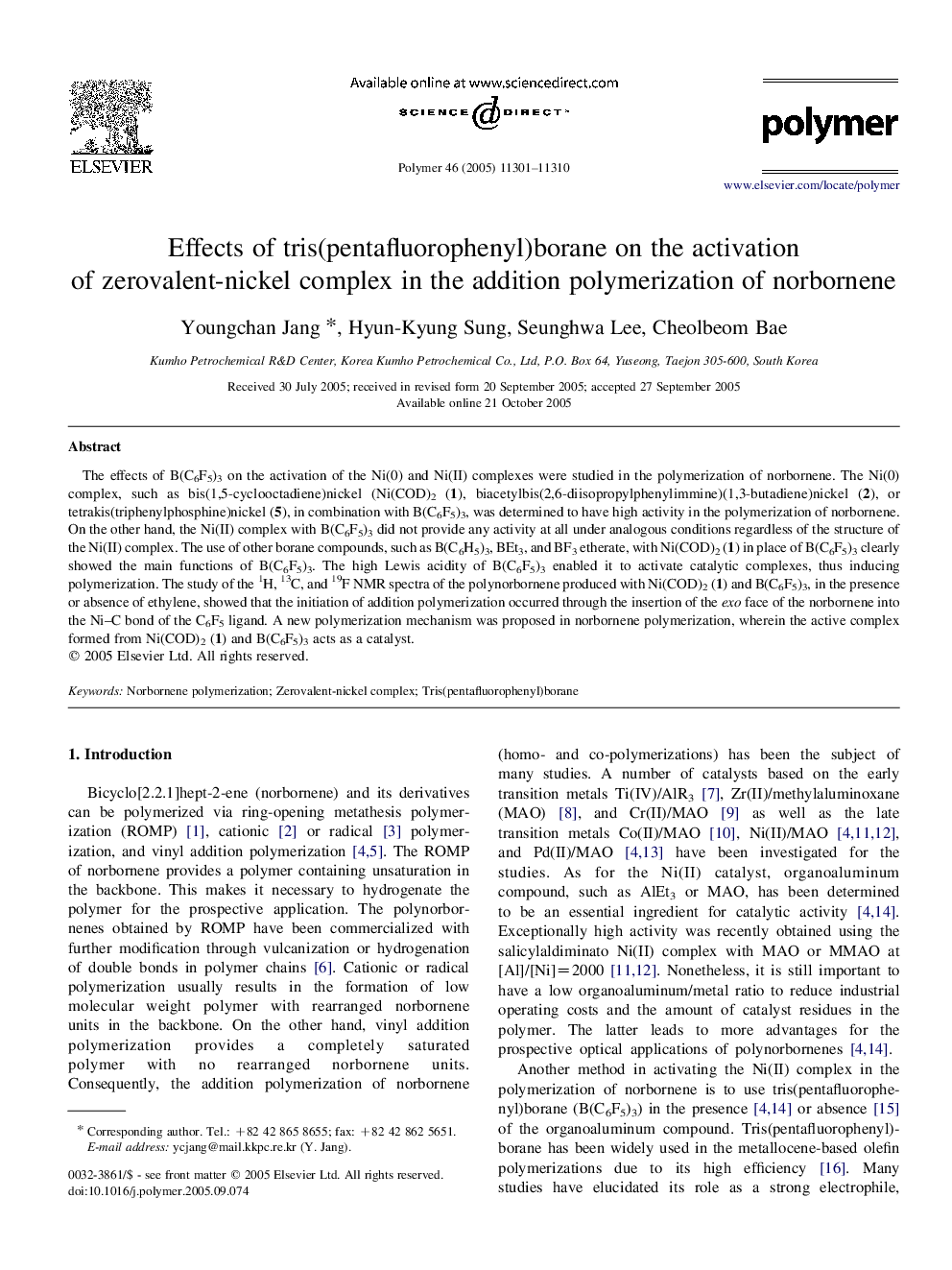| Article ID | Journal | Published Year | Pages | File Type |
|---|---|---|---|---|
| 5187490 | Polymer | 2005 | 10 Pages |
The effects of B(C6F5)3 on the activation of the Ni(0) and Ni(II) complexes were studied in the polymerization of norbornene. The Ni(0) complex, such as bis(1,5-cyclooctadiene)nickel (Ni(COD)2 (1), biacetylbis(2,6-diisopropylphenylimmine)(1,3-butadiene)nickel (2), or tetrakis(triphenylphosphine)nickel (5), in combination with B(C6F5)3, was determined to have high activity in the polymerization of norbornene. On the other hand, the Ni(II) complex with B(C6F5)3 did not provide any activity at all under analogous conditions regardless of the structure of the Ni(II) complex. The use of other borane compounds, such as B(C6H5)3, BEt3, and BF3 etherate, with Ni(COD)2 (1) in place of B(C6F5)3 clearly showed the main functions of B(C6F5)3. The high Lewis acidity of B(C6F5)3 enabled it to activate catalytic complexes, thus inducing polymerization. The study of the 1H, 13C, and 19F NMR spectra of the polynorbornene produced with Ni(COD)2 (1) and B(C6F5)3, in the presence or absence of ethylene, showed that the initiation of addition polymerization occurred through the insertion of the exo face of the norbornene into the Ni-C bond of the C6F5 ligand. A new polymerization mechanism was proposed in norbornene polymerization, wherein the active complex formed from Ni(COD)2 (1) and B(C6F5)3 acts as a catalyst.
